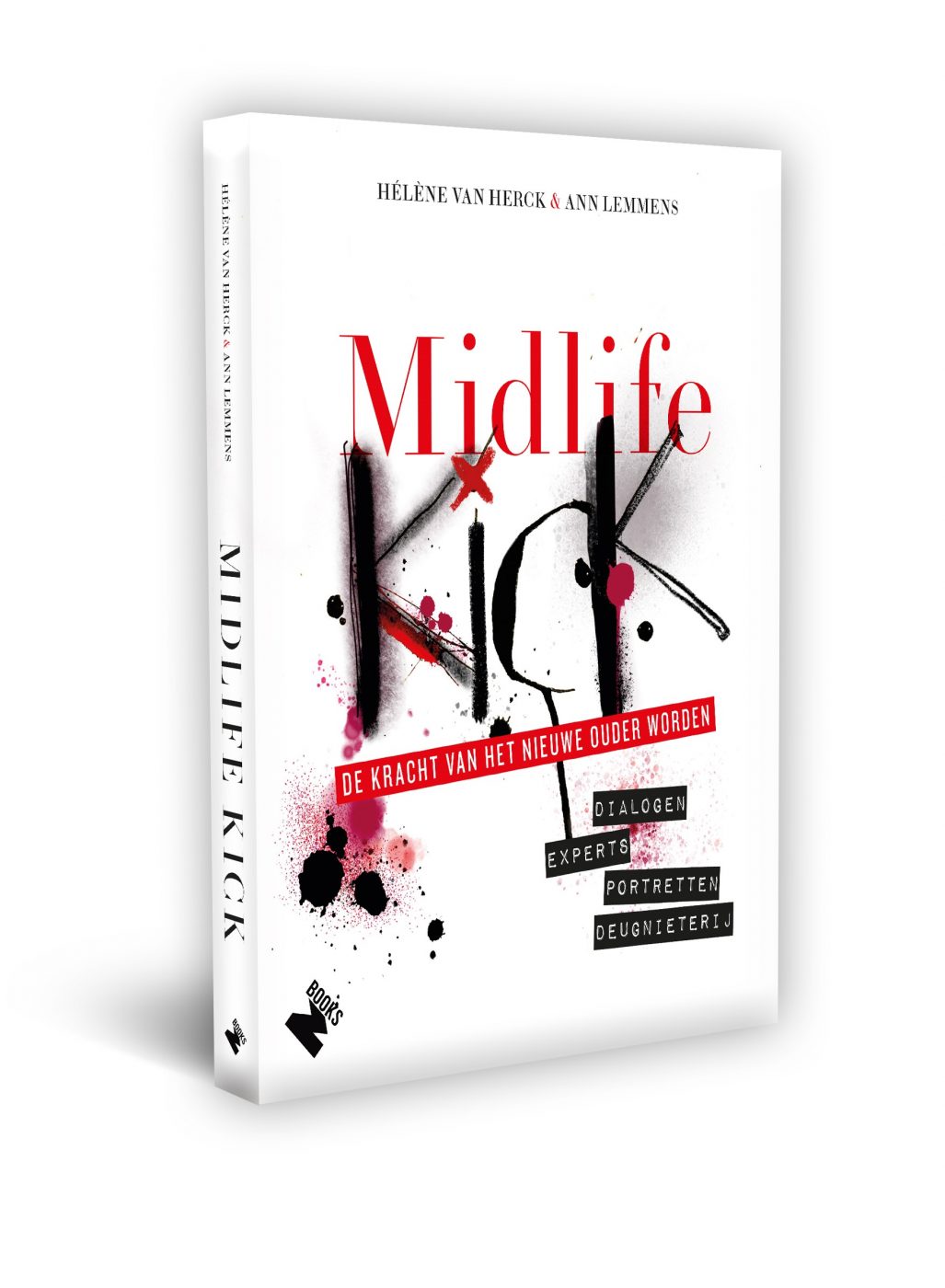De meest gelezen post op Wifty is de post van natuurarts Stef Mintiens over de fabel van lactose en glutenvrij eten. Met meer dan 7300 LIKES + 60 Tweets + 547 Shares ging deze reportage de wereld rond. Vorige week kregen we een mailtje uit Australië:
[highlight]Dear Sir/Madam
Is it possible to have a copy of this article in English??
If so, It would be much appreciated.
Thanking you.
Keith[/highlight]
No, not Google Translate! Google Translate produces imperfect, robotic options. Says Justine Harcourt de Tourville. Justine writes & edits in English. Quality is top. She’s simply the best!
Naturopathic physician Stef Mintiens about the commercialization of lactose and gluten-free food
 Stef Mintiens is naturopathic physician who has championed a healthy diet and lifestyle for over 25 years. Her reviews stories making the rounds with basic common sense and a scientific skepticism analyzing them at their core. Stef is angry about the commercialization of lactose and gluten-free food. It’s a trend focused purely on consumption. Most people do not understand it and are literally swallowing the wrong things. He wrote the following about the lactose and gluten-free food myth:
Stef Mintiens is naturopathic physician who has championed a healthy diet and lifestyle for over 25 years. Her reviews stories making the rounds with basic common sense and a scientific skepticism analyzing them at their core. Stef is angry about the commercialization of lactose and gluten-free food. It’s a trend focused purely on consumption. Most people do not understand it and are literally swallowing the wrong things. He wrote the following about the lactose and gluten-free food myth:
Just 0.6% of the population suffers from celiac disease and cannot tolerate gluten. But more than 25% of people cannot tolerate wheat. Less than 0.5% of people are lactose intolerant, but more than 90% of people cannot digest pasteurized cow’s milk.
If there’s one thing that public relations departments in the food and pharma industries excel in, it’s sugarcoating simple facts with complex terms no one fully understands. Everyone uses terms that convey a certain expertise, but if you look at what is actually happening, you find commercial interests involved. Homo sapiens sapiens are continually being deceived with disastrous consequences for health and wallet.
Wheat
Gluten is a protein that acts as a sort of glue so that the flour grains stick to each other; it allows air bubbles to survive in dough, making bread and pastries airy. It is also used to ensure that paprika powder sticks to your chips.
The term “gluten-free” has almost become mandatory in recent books on healthy eating found in the so-called “healthy food section” at the bookstore. Some, like Dr. William Davis (The Bread Belly), gluten is termed a poison—somewhat unfairly.
It’s true that approximately 0.6% of the population have a veritable intolerance for gluten, which plays an important role in the development of celiac disease or Crohn’s disease (where the bowels become chronically inflamed from an immune response to these proteins).
In these people, the use of gluten will lead to abdominal pain, chronic diarrhea, anemia, weight loss and fatigue. Children with celiac disease have significant growth retardation. But like all chronic health problems, celiac disease does not have one cause. It is a complex interplay of a variety of factors that undermine immunity, so gluten sensitivity has marked repercussions.
While currently the causes are largely unknown, more and more signs point to abnormalities in the gut. For example, celiac disease seems to appear after a first-time infection, the use of antibiotics or anesthesia. Gluten as the sole culprit seems unlikely: in fact, the harder the wheat, the more gluten. As we all know, Italians eat pasta, pizza and bread, all made from harder wheat. We eat on average 18 grams of gluten per day, whereas Italians consume almost double (32 grams)–yet celiac disease is much less prevalent in Italy.
I believe the immune system should be seen as a whole: detecting other intolerances, restoring intestinal flora, replacing industrially-manufactured foods with whole foods. Evidence shows that intestinal problems in those diagnosed with celiac disease can greatly improve with these changes, in turn affecting their gluten intolerance.
But then there’s a erroneous mental leap made by many, a mistake so common there’s even a term for it: non-celiac gluten sensitivity. It’s a term used to describe the symptoms of intestinal hypersensitivity after eating bread or pasta. Today nearly 30% of people indicate they suffer after eating bread or wheat. They apply the convenient term “Gluten Intolerance” or the even more inaccurate “Gluten Allergy.” Testing shows us that for these sufferers, sensitization is actually a hypersensitivity to the ubiquitous and industrial, engineered wheat used today. To prohibit the use of gluten for this group is too harsh and unnecessary.
Dr. Peter Gibson came to this conclusion after an investigation in Melbourne, which controlled precisely what people ate over a stay of several days in a closed environment. His conclusion, which appeared in the magazine Gastroenterology, was that, absent celiac disease, the gut is not gluten sensitive. But the anti-gluten community, whether in the press or on the Internet, had apparently not read this article. The lack of knowledge created a marketing bonanza, because if you calculate that in the Benelux 1.5 million people suffer from irritable bowel syndrome, you can see the link between “gluten” and “gluten-free nutrition” is big business.
But whomever is knowledgeable can see the pitfalls.
So, what’s the problem with wheat? None actually, if you’re talking about the wheat that came before the time the Monsantos of the world had anything to do with it. Wheat, like any other seed, contains in itself all the necessary minerals and elements to create a new plant. In the book by Werner Kollath, wheat is still promoted as a healthy, wholesome and inexpensive food. But because of food’s industrialization, healthy wheat is miles away from the manipulated, processed, and refined flour of today. As with sugar, flour is reduced to being a mere source of carbohydrates, which are ingested too much, anyway.
I’m explain the problem with wheat in a simplified manner. Previously, the wheat farmer sowed his fields and following the harvest put aside roughly 5% of the seeds for the next year. In the course of the centuries, seeds were crossed and selected to obtain “better” varieties. Seed producers, however, do not like farmers being self-reliant in this way and prefer to sell seed every year. By blending two species with each other, for example a horse and a donkey, the descendants are then rendered infertile (think of a mule). Thus, if you intersect wheat with a type of grass, you get the same result: barren kernels. Hooray for seed producers! Now they can now sell seed every year. And not just seed, of course, but the whole array: seeds, fertilizers and pesticides. The farmer is given a choice: either he buys the whole package, or he gets nothing.
That’s no hooray for us, because most of us aren’t cows so we can’t digest grass, and genetically, “grain” is actually 50% grass. This is where today’s wheat problem lies. Add all the additives (dough strengtheners) and processes (bleaching, etc) inflicted on the flour and you end up with a dead and industrial product, while wheat traditionally used to be a natural, living and whole food.
So do you have to eat gluten if your stomach rumbles in the morning and you get a huge energy dip at 11:00 a.m.? NO! It would be wise, however, to avoid all industrial wheat and replace them with healthy, whole grains such as spelt, kamut, quinoa and rye.
The best proof of the pudding is in the eating:
Try this for 10 days and see the difference:
Choose fresh, short supply-chain products. That means choosing products that have a short distance between the producer and consumer (you) as possible. You are better able to ascertain the quality since you—hopefully—know the producer personally.
If you’ve been paying attention, you might have thought “Aha, then I’m going to search for old, unmanipulated wheat, and use them for my bread and pasta.” Well-observed, and often, correct. Many people will, after abstaining for three months from food that they are intolerant to, discover they can handle wheat if it’s the organic, old and unmanipulated variety that is luckily still available in Germany, the south of France and Italy. But our body is intelligent, and adapts continually to changing circumstances. So for many people, wheat intolerance has been cemented into the genetic material, and the sensitivity is even passed on to the next generation. Just like in the past few decades with cow’s milk.
Milk
It’s a similar story when we look at lactose intolerance. Raw cow’s milk was previously a natural and complete food source. You collected it fresh from the farmer, and often drank it raw, or let the milk enzymes and rennets do their job to create delicious, natural cheeses. The problem was the limited shelf life. It was absolutely necessary to use the short supply-chain of producer to consumer. That wasn’t to the industry’s liking since they prefer uniform products and plentiful stock. And so fresh, full milk became “pasteurized.” Louis Pasteur’s name is misused in this context; Pasteur was looking to prevent infection from microorganisms. But the flash temperature treatments in the dairy industry had more to do with de-naturalizing, in other words, making the milk “inactive,” resulting in a “dead” milk that could be stored for a long time.
And that is what the dairy industry wants: longer shelf life, plentiful stock, and manageable chemical processes.
But just like calves, we need the enzymes in cow’s milk in order to digest them.
Beginning to get the picture? Since your baby days, you have been pumped full with dairy products that are indigestible.
Our bodies don’t want these things and babies can have a violent reaction: our intestines will overproduce mucous or a slime which causes a severe reaction so that we expell all that stuff back out. “Reflux” as it’s termed, and “medical science” act as if it’s a problem in your stomach and esophagus, but the real problem is in the unpalatable contents of the baby bottle.
Later in life, we get runny noses, phlegm, rumbling intestines, hay fever and yes, probably celiac disease (see above) from the excessive use of pasteurized milk.Should we switch then to unpasteurized dairy products? It’s too late for most of us. Seems like the hypersensitivity for cow’s milk has been generations in the making thanks to the “indigestible milk” built in our hereditary nature, because even children who have never had cow’s milk still seem to be allergic for it. Already back in 1942 Werner Kollath pointed to the unpalatable nature of pasteurized cow’s milk and its adverse impact on health. In the second half of the last century, people committed to identifying and addressing various food intolerances were viewed scornfully by the classical medical and/or pharma industry.
But suddenly, towards the 21st centure, the term “lactose allergy” or “lactose intolerance” started popping everywhere in hospital environments. Did they suddenly see the light? Obviously not, because intolerance is not actually for lactose, the sugar from any animal milk, but the lactoprotein–the protein in cow’s milk. The analogy with the gluten becomes clear. So where does the term “lactose intolerance” come from? From the drug industry. Lots of pills and medicines are made with this milk sugar. Which means that the pharmaceutical industry uses volumes of milk to extract lactose from it. Whatever remains leftover, the waste, becomes the lactose-free milk. The commercially-minded of you will know that you can become rich by processing someone else’s waste, so the commercialization of lactose-free products is big business. And again, the Homo sapiens sapiens let themselves be outsmarted by well-crafted PR stories by industry. Thus the term lactose intolerance with its accompanying “hocus-pocus” appears, which no one understands—including doctors—and are set on the wrong path.
Consuming lactose-free milk doesn’t help, whereas avoiding dairy products will.
Conclusions:
Unless you’re a calf, you don’t need dairy or dairy products in your diet.
Due to the pasteurization process, dairy is not very digestible, and frequent or abundant consumption is not recommended.
If you are intolerant for lactoprotein, like 90% of the population today, your best course of action is to remove dairy products from your diet for a period of three months to allow the bowels to repair themselves. After that, you can attempt to try—if you like—cheese, etc preferably the kind made from raw milk.
It’s the same advice for grains: avoid industrially-manipulated wheat, choose for unadulterated and freshly-milled grains (or even better, grind it yourself). The assault on our intestines by industrial wheat has resulted in more people having an intolerance for other grains, too: spelt, kamut, quinoa, rye, oats, etc. After a three month fast, if you’d like to try wheat again, select the whole, untampered types of wheat. Do not be tempted by food direct from a factory bearing the label “gluten or lactose-free.”
Fresh is the keyword. Pre-packaged foods can be used in moderation, as in an occasional splurge, but don’t depend on them for daily nutrition. Your body will get more than it bargained for plus excess carbohydrates and unhealthy fats.
Choose for FRESH foods. Feel, smell, taste; avoid packaging that comes from a factory, even the kind with an organic label on it.
[highlight]Have questions for Stef Mintiens? Send them to wifty@wifty.be[/highlight]
Justine Harcourt de Tourville: http://www.hadto.be














1 Comments
Silvia
Zeer goed artikel, proficiaat